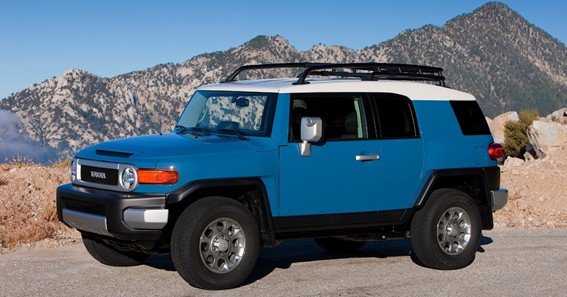When researching a rugged off-roader with a distinct retro-modern appeal, examining the FJ Cruiser dimensions is a crucial part of the process. The Toyota FJ Cruiser, produced primarily between 2006 and 2014 for the North American market (though it continued in other regions for a few more years), is celebrated for its capable 4×4 system, stylish throwback design, and durable construction. Below, we’ll break down the exterior and interior measurements, real-time availability insights, and frequently asked questions about this versatile SUV.
1. Exterior Dimensions and Specifications
-
Overall Length:
- Approx. 183.9 inches
This relatively compact length, combined with a 105.9-inch wheelbase, makes the FJ Cruiser adept at maneuvering through tight trails and city streets alike.
- Approx. 183.9 inches
-
Width (without mirrors):
- About 75.0 inches
The wide stance contributes to stability on uneven terrain and enhances off-road confidence.
- About 75.0 inches
-
Height:
- Around 72.0 inches
Depending on tire size and roof rack additions, the actual height may vary slightly.
- Around 72.0 inches
-
Ground Clearance:
- Approximately 9.6 inches
This generous ground clearance enables the FJ Cruiser to clear rocks, ruts, and other off-road obstacles with ease.
- Approximately 9.6 inches
-
Approach & Departure Angles:
- Approach Angle: ~34 degrees
- Departure Angle: ~31 degrees
These angles are key indicators of the FJ Cruiser’s off-road prowess, minimizing the risk of damaging the bumpers when tackling steep ascents or descents.
2. Interior Dimensions and Cargo Space
-
Passenger Capacity:
- Seats up to 5 passengers
While the FJ Cruiser can accommodate five, rear-seat access is via the small, rear-hinged “suicide” doors, which can be a bit tighter than traditional doors.
- Seats up to 5 passengers
-
Front and Rear Headroom:
- Front: ~41.3 inches
- Rear: ~40.3 inches
Despite the bold roof design, there’s ample headroom for most occupants.
-
Front and Rear Legroom:
- Front: ~41.9 inches
- Rear: ~31.3 inches
Rear-seat legroom is modest, making extended journeys more comfortable for two or three passengers upfront and short hauls for those in the back.
-
Cargo Capacity:
- Behind Rear Seats: ~27.9 cubic feet
- With Rear Seats Folded: ~66.8 cubic feet
The wide rear door and fold-flat seats offer a practical cargo space for adventure gear, groceries, or luggage.
3. Real-Time Market Availability
- Used Market: Although the FJ Cruiser ended production in the U.S. after the 2014 model year, you can still find quality used models through platforms like Cars.com or AutoTrader. Prices vary depending on mileage, modifications, and overall condition.
- International Continuation: Some regions (like the Middle East) received newer FJ Cruisers beyond 2014. If you’re in the U.S. or Canada, importing may be an option but will involve additional regulations and costs.
- Collectible Status: Limited availability and enduring popularity have kept resale values high. Well-maintained models, especially with desirable colors and off-road packages, often command a premium.
4. Tips for Potential FJ Cruiser Owners
-
Consider Door Accessibility
The unique rear-hinged doors can limit entry and exit for rear passengers, so plan accordingly if you regularly ferry multiple passengers. -
Check Lift Mods
Many FJ owners install lift kits and oversized tires. While these enhance off-road capability, they can slightly alter the original dimensions—particularly ride height and step-in. -
Maintain Undercarriage
Frequent off-road use means you should regularly inspect and clean the undercarriage. Rust prevention measures are beneficial if you live in regions with salted roads or high humidity. -
Aftermarket Racks & Accessories
Adding roof racks, side steps, or bumper guards can modify overall height or length, so measure carefully, especially if you need to fit into garages with limited clearance. -
Review Vehicle History
If buying used, always run a vehicle history report to check for accidents or significant structural changes that could affect the SUV’s original dimensions.
Frequently Asked Questions (FAQs)
-
Q: How does the FJ Cruiser compare in size to the Toyota 4Runner?
A: The FJ Cruiser is typically shorter in length than the 4Runner, making it more maneuverable off-road. However, the 4Runner offers more rear-seat legroom and cargo space. -
Q: Can a lifted FJ Cruiser still fit in a standard garage?
A: It depends on how much lift and the type of roof rack installed. Many stock FJs fit into standard garages (~7 feet of clearance), but modifications may increase the height. -
Q: Are there aftermarket modifications that improve interior space?
A: While you can’t change the structural dimensions, you can install seat-back organizers, cargo drawers, or roof racks to optimize storage and free up interior space. -
Q: Does the FJ Cruiser’s unique roof design affect headroom?
A: Surprisingly, no. The “floating” roof design still provides ample headroom, even for taller passengers. The stepped roofline helps maintain interior space without sacrificing style. -
Q: Is the cargo area large enough for camping gear?
A: With the rear seats folded, the ~66.8 cubic feet of cargo volume is usually sufficient for multiple bags, tents, and other camping essentials.
In summary, FJ Cruiser dimensions strike a balance between compact agility and practical space, offering off-road enthusiasts a vehicle that’s as versatile on the trail as it is in daily life. Whether you’re eyeing a used model on a local lot or considering an international import, understanding the FJ’s measurements will ensure you’re prepared for any journey ahead.










